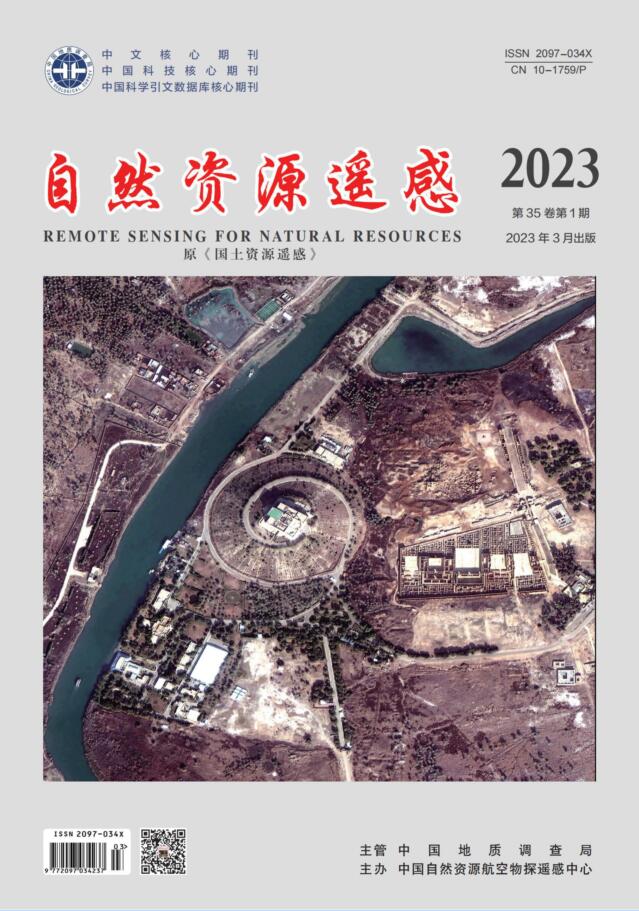| [1] |
李显风, 张玮, 李芬, 等. 基于WebGIS的实况网格产品应用分析平台及关键技术[J]. 气象科技, 2020, 48(2):185-194.
Google Scholar
|
| [2] |
Li X F, Zhang W, Li F, et al. An WebGIS-based real-time application/analysis platform of grid products and key technology[J]. Meteorological Science and Technology, 2020, 48(2):185-194.
Google Scholar
|
| [3] |
张玮, 李显风, 何瑶, 等. 基于江西省站点资料对智能网格实况分析产品的检验评估[J]. 江西师范大学学报(自然科学版), 2020, 44(4):403-410.
Google Scholar
|
| [4] |
Zhang W, Li X F, He Y, et al. The quality assessment of the intelligent grid real-time analysis products using the station data in Jiangxi Province[J]. Journal of Jiangxi Normal University (Nature Science), 2020, 44(4):403-410.
Google Scholar
|
| [5] |
韩帅, 师春香, 姜志伟, 等. CMA高分辨率陆面数据同化系统(HRCLDAS-V1.0)研发及进展[J]. 气象科技进展, 2018, 8(1):102-108.
Google Scholar
|
| [6] |
Han S, Shi C X, Jiang Z W, et al. Development and progress of high resolution CMA land surface data assimilation system[J]. Advances in Meteorological Science and Technology, 2018, 8(1):102-108.
Google Scholar
|
| [7] |
潘旸, 谷军霞, 徐宾, 等. 多源降水数据融合研究及应用进展[J]. 气象科技进展, 2018, 8(1):143-152.
Google Scholar
|
| [8] |
Pan Y, Gu J X, Xu B, et al. Advances in multi-source precipitation merging research[J]. Advances in Meteorological Science and Technology, 2018, 8(1):143-152.
Google Scholar
|
| [9] |
师春香, 潘旸, 谷军霞, 等. 多源气象数据融合格点实况产品研制进展[J]. 气象学报, 2019, 77(4):774-783.
Google Scholar
|
| [10] |
Shi C X, Pan Y, Gu J X, et al. A review of multi-source meteorological data fusion products[J]. Acta Meteorologica Sinica, 2019, 77(4):774-783.
Google Scholar
|
| [11] |
李显风, 张玮, 黄少平, 等. 江西省气象-水文-雷达小时雨量信息融合试验结果分析[J]. 暴雨灾害, 2020, 39(3):276-284.
Google Scholar
|
| [12] |
Li X F, Zhang W, Huang S P, et al. Analysis of fusion test results on hourly precipitation from meteorological and hydrological stations and Radar[J]. Torrential Rain and Disasters, 2020, 39(3):276-284.
Google Scholar
|
| [13] |
Kustas W P, Norman J M, Anderson M C, et al. Estimating subpixel surface temperatures and energy fluxes from the vegetation index-radiometric temperature relationship[J]. Remote Sensing of Environment, 2003, 85(4):429-440. [8 ] Agam N, Kustas W P, Anderson M C, et al. A vegetation index based technique for spatial sharpening of thermal imagery[J]. Remote Sensing of Environment, 2007, 107(4):545-558.
Google Scholar
|
| [14] |
张晓. 天山中段卫星降水数据的降尺度研究及时空特征分析[D]. 兰州: 西北师范大学, 2013.
Google Scholar
|
| [15] |
Zhang X. Study on the downscaling algorithm of remote sensing precipitation and analysis of temporal-spatial characteristic in the middle section of Mount Tianshan[D]. Lanzhou: Northwest Normal University, 2013.
Google Scholar
|
| [16] |
Duan S B, Li Z L. Spatial downscaling of MODIS land surface temperatures using geographically weighted regression:Case study in northern China[J]. IEEE Transactions on Geoscience and Remote Sensing, 2016, 54(11):6458-6469.
Google Scholar
|
| [17] |
Yang G J, Pu R L, Huang W J, et al. A novel method to estimate subpixel temperature by fusing solar-reflec-tive and thermal-infrared remote-sensing data with an artificial neural network[J]. IEEE Transactions on Geoscience and Remote Sensing, 2010, 48(4):2170-2178.
Google Scholar
|
| [18] |
Hutengs C, Vohland M. Downscaling land surface temperatures at regional scales with random forest regression[J]. Remote Sensing of Environment, 2016, 178:127-141.
Google Scholar
|
| [19] |
颜佳楠, 陈虹, 姚光林, 等. 基于XGBoost的LST空间降尺度方法[J]. 无线电工程, 2021, 51(12):1508-1516.
Google Scholar
|
| [20] |
Yan J N, Chen H, Yao G L, et al. A spatial downscaling method of land surface temperature based on XGBoost algorithm[J]. Radion Engineering, 2021, 51(12):1508-1516.
Google Scholar
|
| [21] |
尹枷愿, 蔡宏, 田鹏举, 等. 喀斯特地区地表温度空间降尺度方法初探[J]. 地理与地理信息科学, 2021, 27(3):38-46.
Google Scholar
|
| [22] |
Yin J Y, Cai H, Tian P J, et al. Spatial downscaling research of the land surface temperature in karst region[J]. Geography and Geo-Information Science, 2021, 27(3):38-46.
Google Scholar
|
| [23] |
徐彬仁, 魏瑗瑗. 基于随机森林算法对青藏高原TRMM降水数据进行空间统计降尺度研究[J]. 国土资源遥感, 2018, 30(3):181-188.doi:10.6046/gtzyyg.2018.03.25.
Google Scholar
|
| [24] |
Xu B R, Wei Y Y. Spatial statistics of TRMM precipitation in the Xizang Plateau using random forest algorithm[J]. Remote Sensing for Land and Resources, 2018, 30(3):181-188.doi:10.6046/gtzyyg.2018.03.25.
Google Scholar
|
| [25] |
张朝忙, 刘庆生, 刘高焕, 等. STRM3与ASTER GDEM数据处理及应用进展[J]. 地理与地理信息科学, 2012, 28(5):29-34.
Google Scholar
|
| [26] |
Zhang C M, Liu Q S, Liu G H, et al. Data processing and application progress of SRTM3 and ASTER GDEM[J]. Geography and Geo-Information Science, 2012, 28(5):29-34.
Google Scholar
|
| [27] |
康俊锋, 黄烈星, 张春艳, 等. 多机器学习模型下逐小时PM2.5预测及对比分析[J]. 中国环境科学, 2020, 40(5):1895-1905.
Google Scholar
|
| [28] |
Kang J F, Huang L X, Zhang C Y, et al. Hourly PM2.5 prediction and comparative analysis under multi-machine learning model[J]. China Environment Science, 2020, 40(5):1895-1905.
Google Scholar
|
| [29] |
胡占占, 陈传法, 胡保健. 基于时空XGBoost的中国区域PM2.5浓度遥感反演[J]. 环境科学学报, 2021, 41(10):4228-4237.
Google Scholar
|
| [30] |
Hu Z Z, Chen C F, Hu B J. Estimating PM2.5 concentrations across China based on space-time XGBoost approach[J]. Acta Scientiae Circumstan tiae, 2021, 41(10):4228-4237.
Google Scholar
|
| [31] |
余东昌, 赵文芳, 聂凯, 等. 基于LightGBM算法的能见度预测模型[J]. 计算机应用, 2021, 41(4):1035-1041.
Google Scholar
|
| [32] |
Yu D C, Zhao W F, Nie K, et al. Visibility forecast model based on LightGBM algorithm[J]. Journal of Computer Application, 2021, 41(4):1035-1041.
Google Scholar
|






 DownLoad:
DownLoad: